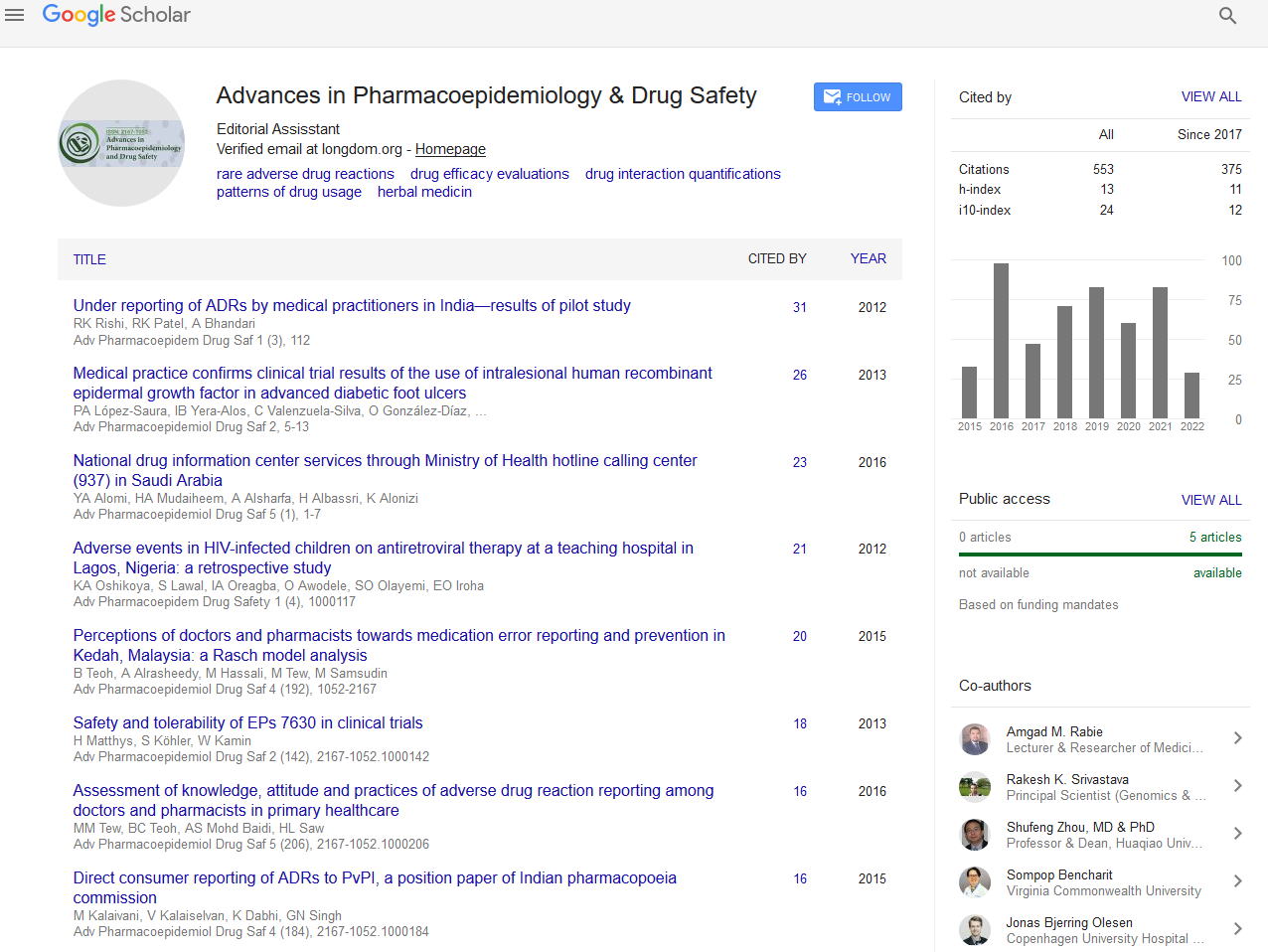Indexed In
- Open J Gate
- Genamics JournalSeek
- Academic Keys
- JournalTOCs
- RefSeek
- Hamdard University
- EBSCO A-Z
- SWB online catalog
- Publons
- Geneva Foundation for Medical Education and Research
- Euro Pub
- Google Scholar
Useful Links
Share This Page
Journal Flyer

Open Access Journals
- Agri and Aquaculture
- Biochemistry
- Bioinformatics & Systems Biology
- Business & Management
- Chemistry
- Clinical Sciences
- Engineering
- Food & Nutrition
- General Science
- Genetics & Molecular Biology
- Immunology & Microbiology
- Medical Sciences
- Neuroscience & Psychology
- Nursing & Health Care
- Pharmaceutical Sciences
Abstract
Sequence Symmetry Analysis and Disproportionality Analyses: What Percentage of Adverse Drug Reaction do they Signal?
Izyan A Wahab, Nicole L Pratt, Lisa M Kalisch and Elizabeth E Roughead
Background: Sequence Symmetry Analysis (SSA) is a method to detect Adverse Event (AE) signals using administrative claims data. Proportional Reporting Ratio (PRR), Reporting Odds Ratio (ROR) and Bayesian Confidence Propagation Neural Network (BCPNN) are methods to detect AE signals using spontaneous reporting data. The proportion of AEs detected by all four methods is unknown. Objective: To determine sensitivity, specificity and predictive values of SSA, PRR, ROR and BCPNN for a set of medicine-AE pairs. Methods: All AEs identified in published Randomised Controlled Trials (RCTs) and Product Information (PI) were extracted for 19 medicines. Gold standard positive AEs were events identified in powered RCTs and gold standard negative AEs were events not listed in the PI for that medicine or any other medicines in the class. SSA was performed for each medicine-AE pairs using Australian Goverrnment Department of Veterans Affairs’ data, while the PRR, ROR and BCPNN, was calculated using the Food and Drug Administration Adverse Events Reporting System data. Results: A total of 157 medicine-AE pairs (43 positive and 114 negative) were identified and tested. SSA, PRR, ROR and BCPNN had a sensitivity of 65%, 1 9%, 49% and 51% respectively. Specificities across all methods were similar; 89%-97%. Thirty percent of true positive pairs were detected by all methods. SSA detected an additional 35% different true positive pairs while PRR, ROR and BCPNN methods detected an additional 21% different true positive pairs. Conclusions: Using the combination of signalling methods and data sources, more adverse drug reactions can be detected and could potentially strengthen the safety surveillance of post-marketing medicine.


